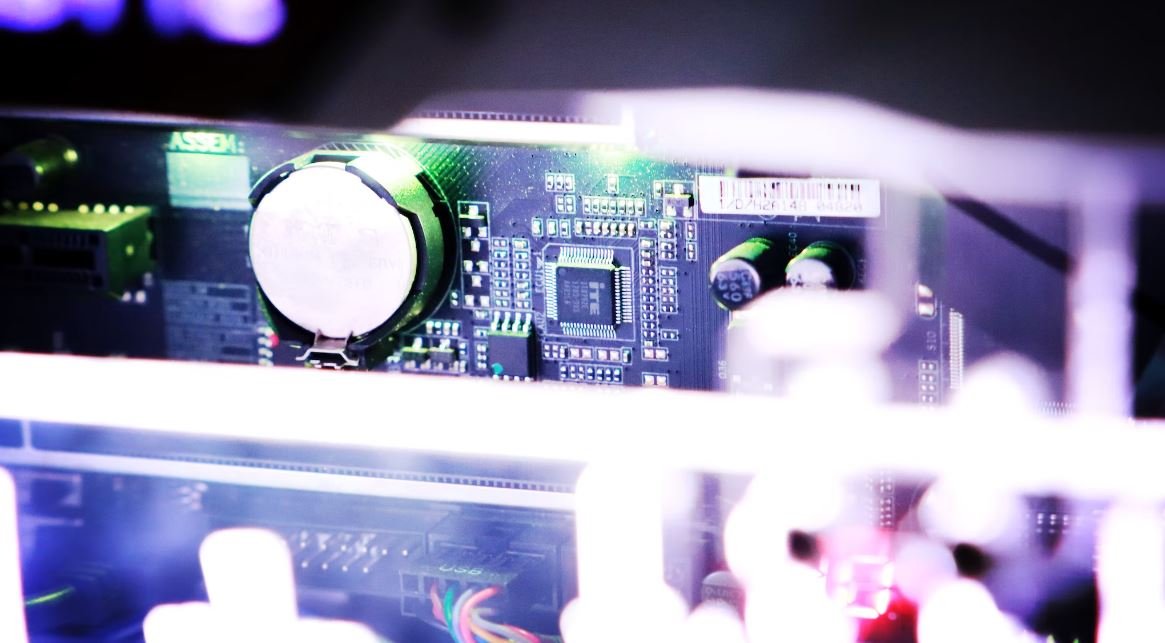AI Tools to Enhance Your PNG Files
In the digital age, images play a crucial role in capturing attention and conveying information effectively. Whether for personal use or business-related tasks, having the right tools to optimize and enhance your PNG (Portable Network Graphics) files can make a significant difference in their quality and visual appeal. AI (Artificial Intelligence) tools are revolutionizing the way we process and edit images, providing advanced features and functionalities previously unavailable to non-professionals. In this article, we will explore some popular AI tools that can help you take your PNG files to the next level.
Key Takeaways:
- AI tools offer advanced image editing and enhancement features.
- They provide automatic background removal for PNG files.
- AI can help in upscaling and improving image quality.
- These tools simplify the process of photo retouching and restoration.
- Machine learning algorithms can generate realistic images from scratch.
Automatic Background Removal
One of the most time-consuming tasks when working with PNG files is manually removing the background. However, with AI-powered tools like Remove.bg and Clipping Magic, this process becomes effortless. These tools utilize powerful algorithms to identify and separate the foreground from the background, allowing you to replace or remove the background with just a few clicks. *Removing backgrounds manually can take hours, but AI tools make it a breeze.*
Image Upscaling and Quality Improvement
Upscaling low-resolution PNG images without compromising their quality can be challenging. Thanks to AI tools such as Topaz Gigapixel AI, you can now enhance the resolution and increase the level of detail in your images. This tool uses machine learning algorithms to intelligently “guess” missing information and upscale images without causing blurriness or artifacts. *It’s fascinating how AI can enhance image quality far beyond traditional methods.*
Photo Retouching and Restoration
When it comes to retouching and restoring vintage or damaged photos, AI tools like Adobe Photoshop and Skylum Luminar offer powerful features to simplify the process. These tools use AI algorithms to automatically enhance color, remove blemishes, and repair damaged areas, saving you valuable time and effort. *AI-powered photo restoration brings old memories back to life with stunning results.*
Generating Realistic Images
AI technology has advanced to the point where it can generate stunningly realistic images from scratch. Tools like DeepArt.io and DALL-E utilize deep learning algorithms to generate unique and artistic images based on your inputs or specifications. These AI-generated images can be used for various purposes, including website design, social media content, and even as artwork. *AI’s ability to create art is pushing the boundaries of creativity and imagination.*
Tables:
AI Tools with Background Removal Capabilities:
| Tool | Description |
|---|---|
| Remove.bg | Automatically removes background from PNG images. |
| Clipping Magic | Efficiently separates foreground from background in PNG files. |
AI Tools for Image Upscaling:
| Tool | Description |
|---|---|
| Topaz Gigapixel AI | Upscales PNG images while preserving quality and detail. |
AI Tools for Photo Retouching and Restoration:
| Tool | Description |
|---|---|
| Adobe Photoshop | Offers advanced retouching and restoration features. |
| Skylum Luminar | Uses AI algorithms to enhance and restore photos. |
Conclusion
AI tools have revolutionized the way we process, edit, and enhance PNG files. With automatic background removal, image upscaling capabilities, photo retouching, and even the generation of realistic images, these tools offer advanced features that were once only available to professionals. Incorporating AI tools into your workflow can significantly improve the quality and visual appeal of your PNG files, helping you stand out in the digital landscape. Embrace the power of AI and unlock the full potential of your images!

Common Misconceptions
Misconception 1: AI tools can replace human intelligence
One common misconception about AI tools is that they have the ability to completely replace human intelligence. However, this is not the case as AI tools are designed to assist and enhance human capabilities rather than replicate them.
- AI tools rely on human input and guidance to function effectively
- Human intellect and intuition can still outperform AI tools in certain complex tasks
- AI tools lack the creativity and emotional intelligence that humans possess
Misconception 2: AI tools are infallible and error-free
Another common misconception is that AI tools are infallible and completely error-free. While AI technologies have advanced significantly, they are still prone to errors and limitations.
- AI tools can be biased due to the data they are trained on
- AI tools may produce incorrect results if the input data is incomplete or inaccurate
- AI tools can struggle with ambiguous or unstructured data
Misconception 3: AI tools will lead to widespread job loss
One of the most prevalent fears surrounding AI tools is that they will lead to widespread job loss. While it is true that AI can automate certain tasks, it is unlikely to completely replace human workers.
- AI tools often complement human work rather than replace it entirely
- New opportunities and jobs may be created through the development and implementation of AI tools
- Human skills such as creativity, critical thinking, and problem-solving are still highly valuable and difficult to replicate with AI
Misconception 4: AI tools are too complex and difficult to adopt
Many people believe that AI tools are too complex and difficult to adopt, requiring advanced technical knowledge and expertise. However, the reality is that AI tools are becoming increasingly user-friendly and accessible.
- AI tools are being designed with intuitive interfaces to simplify their usage
- Companies are developing AI tools specifically for non-technical users
- Training resources and documentation are widely available to help users adopt and utilize AI tools effectively
Misconception 5: AI tools will surpass human intelligence in the near future
There is a common misconception that AI tools will soon surpass human intelligence and become superintelligent. While AI has made significant advancements, achieving human-level or superintelligent capabilities in the near future is highly unlikely.
- AI is still limited by current computational power and algorithms
- The complexity of human intelligence is not fully understood or replicable with existing AI technologies
- The true limits and potential of AI are yet to be fully explored and understood

Introduction:
Artificial intelligence (AI) has become an indispensable aspect of various industries, enhancing efficiency and revolutionizing the way we approach tasks. Papua New Guinea (PNG) is no exception to this transformative trend. This article explores ten illustrative examples of AI tools and their impact in PNG, showcasing the potential and benefits they offer.
AI Tool: Virtual Personal Assistants
Virtual personal assistants, like Siri and Google Assistant, are gaining popularity in PNG. These intelligent AI tools can answer questions, provide recommendations, and perform tasks on behalf of their users, thereby streamlining daily activities.
AI Tool: Language Translation
AI-powered language translation tools enable seamless communication across different languages, breaking down cultural barriers. Such tools facilitate international collaboration and trade, supporting PNG’s global engagements and networking.
AI Tool: Sentiment Analysis
Sentiment analysis algorithms analyze text and gauge public opinion on specific topics. Assessing sentiments aids businesses, governments, and organizations in understanding public perception, enabling them to adjust strategies and policies accordingly.
AI Tool: Fraud Detection
AI algorithms effectively detect fraudulent activities by analyzing patterns and anomalies in financial transactions. These tools assist financial institutions and businesses in PNG in minimizing financial losses and securing their operations.
AI Tool: Medical Diagnosis
AI systems are increasingly assisting medical professionals in diagnosing diseases accurately and swiftly. These tools can analyze medical data, suggesting potential diagnoses, ensuring timely treatment and improved patient care.
AI Tool: Automated Agriculture
AI tools in agriculture enhance productivity and reduce manual labor. For instance, drones equipped with AI technology can be used for crop monitoring, pest control, and precision farming, ultimately optimizing farming practices in PNG.
AI Tool: Intelligent Traffic Systems
Utilizing AI algorithms, intelligent traffic systems regulate traffic flow by analyzing data from cameras, sensors, and GPS. These tools can minimize congestion and improve road safety, contributing to smoother transportation in PNG.
AI Tool: Automated Content Moderation
AI-powered content moderation systems can review and filter online content, identifying inappropriate or harmful material. These tools maintain a safe online environment for users in PNG, protecting them from harmful content.
AI Tool: Energy Optimization
AI algorithms analyze energy consumption patterns and optimize energy distribution, allowing for more sustainable energy management. Such tools help PNG in promoting clean energy solutions and reducing environmental impact.
AI Tool: Personalized Learning
AI-based personalized learning platforms adapt teaching methods to individual students’ needs and abilities. These tools support education in PNG by tailoring educational content, empowering students to learn at their pace.
Conclusion:
AI tools have firmly established their role in revolutionizing PNG’s various sectors, from healthcare and agriculture to education and transportation. By embracing the transformative power of AI, PNG can enhance efficiency, decision-making, and overall quality of life for its citizens. As the country continues to leverage AI tools and advancements, it will undoubtedly unlock endless possibilities for growth, innovation, and development.
Frequently Asked Questions
1. What is artificial intelligence (AI)?
Artificial intelligence refers to the simulation of human intelligence in machines that are programmed to think, learn, and problem-solve like humans. AI tools are software or systems that utilize AI technologies to perform specific tasks.
2. What are AI tools and how do they work?
AI tools are software applications or platforms that utilize artificial intelligence techniques to automate tasks or enhance human decision-making processes. These tools leverage machine learning algorithms, natural language processing, computer vision, and other AI technologies to carry out their functionalities.
3. What are some common examples of AI tools?
Examples of AI tools include virtual assistants like Siri or Alexa, chatbots, recommendation systems, image and speech recognition software, predictive analytics tools, automated data analysis tools, and autonomous vehicles.
4. How are AI tools beneficial in various industries?
AI tools have a wide range of applications across industries. They can enhance productivity, automate repetitive tasks, improve customer experience, optimize resource allocation, enable personalized marketing strategies, detect fraud or anomalies in financial transactions, improve medical diagnosis, facilitate predictive maintenance in manufacturing, and much more.
5. Are there any ethical concerns regarding the use of AI tools?
Yes, the use of AI tools raises ethical concerns such as privacy issues, bias in AI algorithms, job displacement, security risks, and lack of transparency in decision-making processes. It is important to address these concerns and ensure responsible development and deployment of AI technologies.
6. Can AI tools replace human workers?
AI tools can automate certain tasks, but they are not designed to replace human workers entirely. Instead, they augment human capabilities by automating routine or mundane tasks, allowing humans to focus on more complex work that requires creativity, critical thinking, and emotional intelligence.
7. How can AI tools be integrated into existing systems?
AI tools can be integrated into existing systems through APIs (Application Programming Interfaces) or by incorporating them as standalone software applications. Developers can leverage AI frameworks or libraries to build AI-enhanced applications, while businesses can adopt AI platforms that provide pre-built AI tools and services for easy integration.
8. Are AI tools accessible to everyone?
While AI tools were initially developed by large tech companies, there are now a growing number of AI tools and platforms available to businesses of all sizes. Some AI tools are open-source, allowing developers to customize and build upon them, while others are offered as Software-as-a-Service (SaaS) solutions that are accessible to users on a subscription basis.
9. How can businesses benefit from adopting AI tools?
Businesses can benefit from adopting AI tools in various ways, such as cost reduction through automation, improved decision-making based on data analysis, enhanced customer experience through personalization, increased operational efficiency, and competitive advantage gained from leveraging AI-driven insights.
10. What are the future implications and developments of AI tools?
The future of AI tools holds great potential for advancements in various fields. We can expect further improvements in natural language processing and understanding, computer vision, robotics, autonomous systems, and the use of AI tools in areas such as healthcare, education, finance, and transportation.





